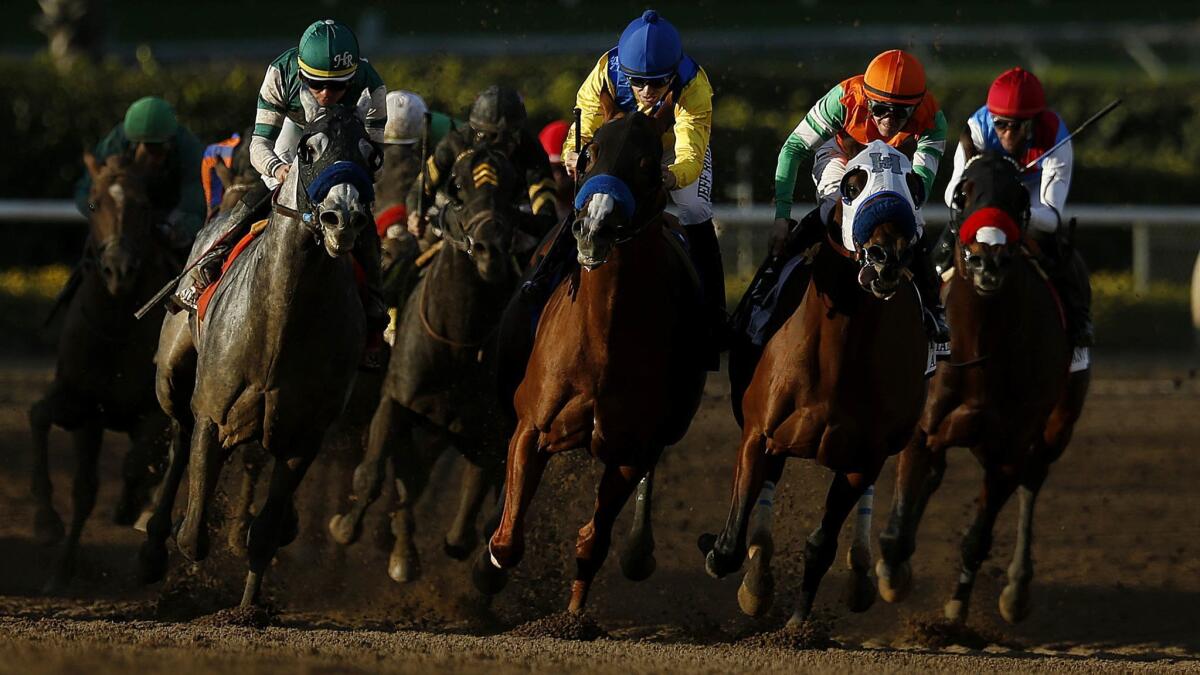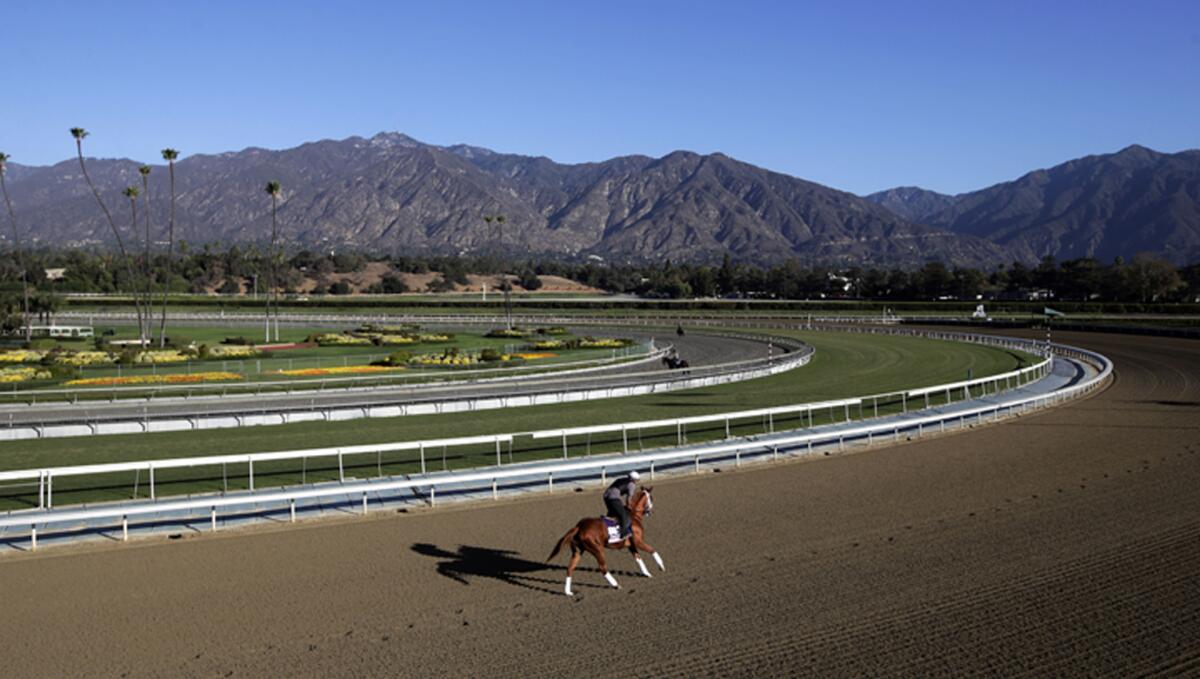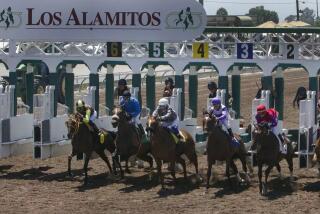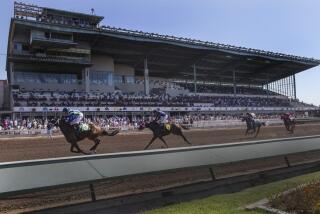No common links found in early examination of Santa Anita horse deaths

The deaths of 21 horses at Santa Anita since Dec. 26 remains a mystery.
The famous horse track, which has been dubbed âThe Great Race Place,â remained shut down Wednesday, one day after the most recent death, which occurred during training.
Racing and track officials are waiting for additional testing on the course surfaces, which has not started because of the rain. A renowned track superintendent and scientists from the University of Kentucky have been brought in as experts and hope to begin examining the situation Thursday.
The alarming number of fatalities, almost double last year, has the horse racing industry searching for answers. Tracks have had clusters of fatalities in the past. In 2014, Del Marâs turf course was rebuilt after a rash of breakdowns. In 2011-2012, Aqueduct in New York had 30 fatalities and the governor got involved to assure changes were made to help make racing safer.
Many of those measures are already in place in California. Among them was the hiring of a full-time medical director. Dr. Rick Arthur, as chief equine veterinarian for the California Horse Racing Board and UC Davis, has that position here.
Arthur has been studying the breakdowns since it first became apparent at the beginning of the year that numbers were up at Santa Anita. So far, he has found nothing that points to a particular type of horse or race or condition that seems to pose more risk than others.
âThey are all over the place, from Battle Of Midway, a well-seasoned horse, to a first-time starter,â Arthur said of the lack of commonalities. âThey are from 19 different trainers. There is nothing that links them together.â
The track is still where everyone is looking first. Mick Peterson, a safety and soil expert from the University of Kentucky, was brought in last week to extensively test the surface. He found nothing unusual compared to tests that have been done the past two years.
On Tuesday, Dennis Moore, who used to manage the surface at Santa Anita and still does at Del Mar and Los Alamitos, was brought in to do testing and measuring.
Arthur has also been searching for something in the physiology of the horses, through necropsies â the equine version of an autopsy â that might point to some answers. Heâs found no trend so far.
âItâs way, way too early to make any conclusions,â Arthur said. âWe need to spend a lot of time and work to collate them and put them all together. Comparing and contrasting race records and training records also takes some time.â
Arthur said that the necropsies might not shed any light into the cause of the breakdowns.
âIf you expect a definitive answer, I wouldnât expect that,â Arthur said. âWe can hope that it identifies strategies that can make racing safer. Itâs not just the track. Itâs not just the horse. Itâs the whole schedule. The training program. The racing program. Everything.â

Meanwhile, Santa Anita has called off its programs at least through this weekend.
âThe safety, health and welfare of the horses and jockeys is our top priority,â said Tim Ritvo, the chief operating officer of the the Stronach Group, which owns and operates Santa Anita, among other tracks. âWhile we are confident further testing will confirm the soundness of the track, the decision to close is the right thing to do at this time.â
The cancellation of races this weekend, for some 3-year-old horses, threw the road to the Kentucky Derby into disarray. The $500,000 San Felipe Stakes was scheduled to be run Saturday, with the top two favorites for the Derby, Game Winner and Improbable, running against each other. Both are trained by Bob Baffert.
âIâm not commenting on anything right now until I make my plans for my horses,â Baffert told The Times in a text message. âJust busy working things out.â
It has also had a ripple affect across the country. Oaklawn, in Arkansas, announced it would break the Rebel Stakes next weekend into two divisions. It could be a landing spot for West Coast horses if Santa Anita still isnât running.
In addition, there is the timing of the races. Horses on the Derby trail generally run four and eight weeks before the Derby. If the San Felipe were not to be run, the training and scheduling of the horses would be significantly disrupted.
Click here to sign up for our free horse racing newsletter.
More to Read
Go beyond the scoreboard
Get the latest on L.A.'s teams in the daily Sports Report newsletter.
You may occasionally receive promotional content from the Los Angeles Times.











